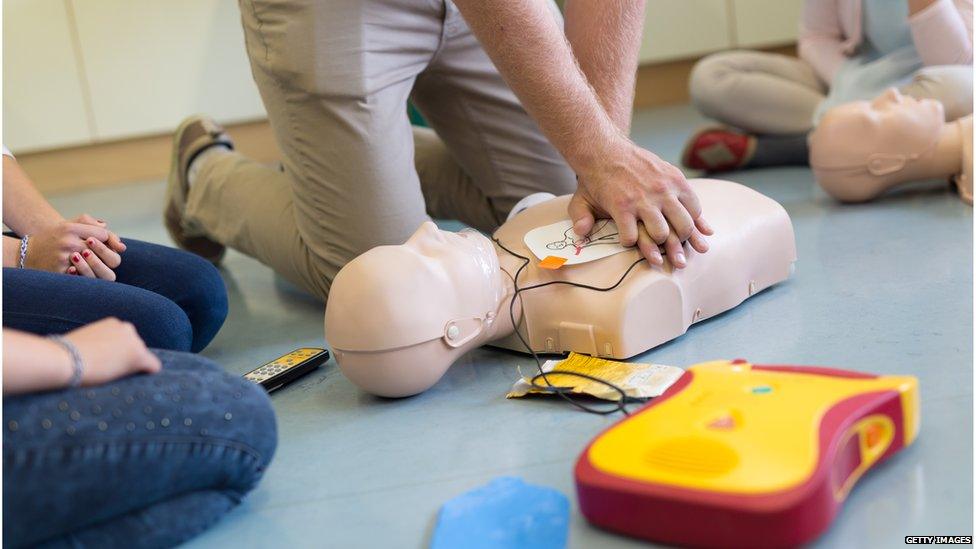Heart emergencies on planes need better treatment, say doctors
- Published

An AED is a portable device that checks the heart rhythm and can send an electric shock to the heart
Airlines should carry more medical equipment for dealing with in-flight cardiac arrests, say doctors.
Such events are rare but account for the majority of deaths on flights, figures reveal.
A task force says electrocardiograms (ECGs) and defibrillators should be available on all aircraft.
About 1,000 people a year die from cardiac arrest in the air, according to data presented at a medical meeting in Geneva, external.
Although cardiac arrests make up less than 1% of all in-flight medical emergencies, they can have particularly serious consequences.
Doctors led by Prof Jochen Hinkelbein of the University of Cologne, Germany, and president of the German Society for Aerospace Medicine, have drawn up new proposals for cardiac arrest on plane journeys. They include:
All planes to carry an ECG and automated external defibrillator (AED)
Aircraft crew should request help as soon as possible by an onboard announcement after identification of a patient with cardiac arrest. The announcement should state there has been a suspected cardiac arrest and also the location of the emergency equipment.
Two-person cardio-pulmonary resuscitation (CPR) should be performed if possible and the crew should be trained regularly in basic life support
The plane should be diverted immediately if necessary
Prof Hinkelbein said: "This is the first guideline providing specific treatment recommendations for in-flight medical emergencies during commercial air travel.
"This is of major importance to recommend proper actions and procedures since the airplane environment as well as equipment will be significantly different to what can be provided for medical emergencies on the ground."
The experts say they will be contacting individual airlines directly and asking them to incorporate the guidelines into their emergency procedures.
Space medicine
Medics are also turning their attention to developing protocols for dealing with heart emergencies in space.
In microgravity, CPR is especially difficult to perform.
Methods of CPR tested in microgravity experiments on aircraft and in space simulators suggest a "hand-stand" technique is the most effective, said Prof Hinkelbein.
In this method, the feet are placed on one wall of the cabin, with the patient's back against the opposite wall, and the chest compressions are applied against the breastbone.
In small, confined spaces an alternative is the method of wrapping the legs around a patient during compressions to stop them floating away.
"In the context of future space exploration, the longer duration of missions, and the consecutively higher risk of an incident requiring resuscitation increase the importance of microgravity-appropriate medical techniques," said Prof Hinkelbein.
Other challenges of providing medical treatment in space include strict limits on the amount of medical equipment that can be carried on a mission.
And casualties may have to be cared for by other crew members with little formal medical training.
"Space exploration missions to the Moon and Mars are planned in the coming years," said Dr Matthieu Komorowski, consultant in intensive care and anaesthesia at Charing Cross Hospital, London.
"During these long-duration flights, the estimated risk of severe medical and surgical events, as well as the risk of loss of crew life, are significant."
The research is being presented at a meeting of the European Society of Anaesthesia in Geneva, Euroanaesthesia 2017.